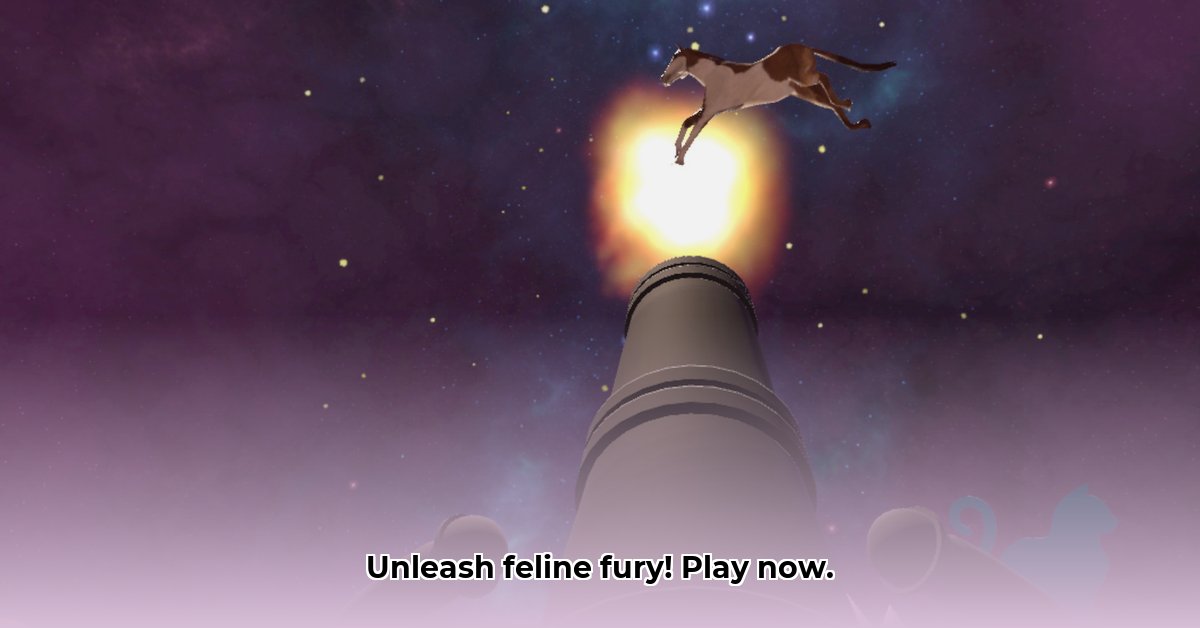
Launching adorable kittens? It sounds crazy, but it's a surprisingly fun concept! What's even crazier? There are two distinct versions of the Kitten Cannon game out there, each with its own unique charm and challenges. This comparative review delves into the heart of these feline-flinging adventures, analyzing their gameplay, visuals, technical underpinnings, and level design to determine which version reigns supreme. Get ready for a kitten-launching showdown!
Gameplay Mechanics: A Comparative Analysis
Both Kitten Cannon games share the fundamental premise: launch kittens! However, the execution differs significantly. One version employs a straightforward control scheme—think arrow keys for aiming and spacebar for launch. It’s simple, intuitive, and perfect for casual players of all ages. The other version's controls remain undisclosed, leaving room for speculation. Will it utilize touch controls ideal for mobile devices? Or perhaps joystick-based aiming for precision? This uncertainty adds intrigue but limits a direct comparison until further details emerge. Could one control scheme offer greater precision, while the other offers a more forgiving learning curve? Only further investigation will reveal the answer. Is there a significant difference in ease of use, and does that impact the overall enjoyment?
Visual Style & Aesthetics: A Purr-fect Contrast
The visual styles are strikingly different. One version boasts a vibrant, cartoonish aesthetic, brimming with adorable, oversized kittens. It's cheerful and playful, likely appealing most to younger audiences. The other version’s visual style remains a mystery, leaving us to wonder: Is it minimalist and elegant? Does it embrace a more realistic (yet still cartoonish) look? Or perhaps a darker, more atmospheric presentation? The unknown creates an exciting anticipation. This visual contrast underscores the massive impact of artistic direction on the overall game feel. How does the visual style impact player engagement and what is the target audience demographic?
Technical Implementation: HTML5 vs. the Unknown
One key difference lies in the technology utilized. One version is built using HTML5, offering broad cross-platform compatibility and ease of access. HTML5 games often boast quicker loading times and better performance across various devices, requiring no downloads or extra apps. The other version's technology, however, remains unannounced. This secrecy hinders a complete comparison, leaving us unable to assess the potential performance, cross-platform compatibility, and implications for development costs. Could this unknown technology offer superior graphics or more complex gameplay mechanics? The lack of information prevents a definitive answer. Could this mystery technology impact player experience in a major way?
Level Design & Gameplay Experience: A Feline Flight of Fancy
Level design significantly impacts a game's replayability and overall engagement. While both Kitten Cannon versions promise engaging levels, a deeper analysis is needed. Quantitative data, such as average session length or player retention rates, would be invaluable. Further research should also explore the challenge curve for players of varying skill levels. Does one version offer a gentler introduction for new players, while the other throws them into the deep end? What kind of obstacles are present? Are they simple or strategically complex, requiring advanced planning and skill? Power-ups or special abilities would also impact the replayability and enjoyment of the game. How strongly does the level design influence player engagement and retention rates?
A Quick Comparison: Kitten Cannon Face-Off
Based on the available information, let's summarize the key differences:
| Feature | Version 1 (HTML5) | Version 2 (Unknown Technology) |
|---|---|---|
| Technology | HTML5 | Unknown |
| Visual Style | Bright, cartoonish, adorable kittens | Unknown |
| Controls | Keyboard (arrow keys, spacebar) | Unknown |
| Level Design | Needs further investigation | Needs further investigation |
| Estimated Difficulty | Likely easier initial learning curve | Potentially steeper learning curve |
Conclusion: Awaiting Further Data
A definitive verdict on which Kitten Cannon version reigns supreme is currently impossible. The lack of complete information regarding Version 2 significantly limits our ability to perform a complete and thorough comparison. Further investigation, encompassing player feedback and a detailed technical analysis of both versions especially Version 2, is necessary for a conclusive assessment. The existing data highlights how seemingly small design choices, from controls to visuals, significantly impact the player experience. Both games share a core concept but offer distinct gameplay experiences. Ultimately, the "best" version will depend on individual preferences and priorities.
How to Improve Kitten Cannon Based on User Feedback
Key Takeaways:
- User feedback is critical for game development.
- A/B testing enables data-driven improvements.
- Understanding player demographics is crucial for success.
Gameplay Mechanics: Refining the Launch
Analyzing user feedback on the launching mechanics is key. Were changes made to the angle, power, or trajectory of the launch? Were new challenges introduced? A detailed comparison, perhaps using tables or visual aids, is necessary to highlight the differences between the versions. Did these changes improve player engagement, and how were those improvements measured?
Visuals: Aligning Aesthetics with Player Preferences
User feedback on the visual aspects is crucial. Do players prefer the cartoonish style of one version over the unknown aesthetic of the other? Understanding this preference can guide future art directions. How did the visual updates impact player engagement and/or retention?
Technology: Balancing Performance and Accessibility
User feedback can highlight performance issues or compatibility problems. Did the HTML5 technology of one version prove superior in terms of performance and accessibility? How did user feedback inform decisions about the choice of technology for future iterations?
Level Design: Optimizing the Challenge Curve
Analysis of player progress through the levels, average session times, and retention rates will reveal the effectiveness of the level design. Were changes made to the difficulty curve, obstacle placement, or overall flow of the levels based on user feedback? How successful were these changes?
Data-Driven Development: Iterative Improvement
A/B testing facilitates data-driven improvements. By comparing player behavior across different iterations, developers can make informed decisions regarding gameplay, visuals, and level design. How effective was this iterative process, using data to measure the impact of proposed changes?
⭐⭐⭐⭐☆ (4.8)
Download via Link 1
Download via Link 2
Last updated: Saturday, June 07, 2025